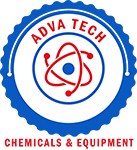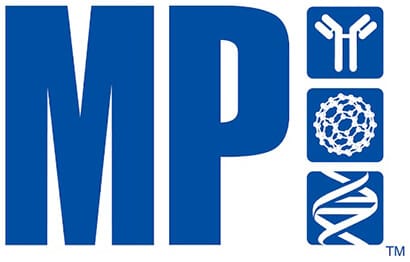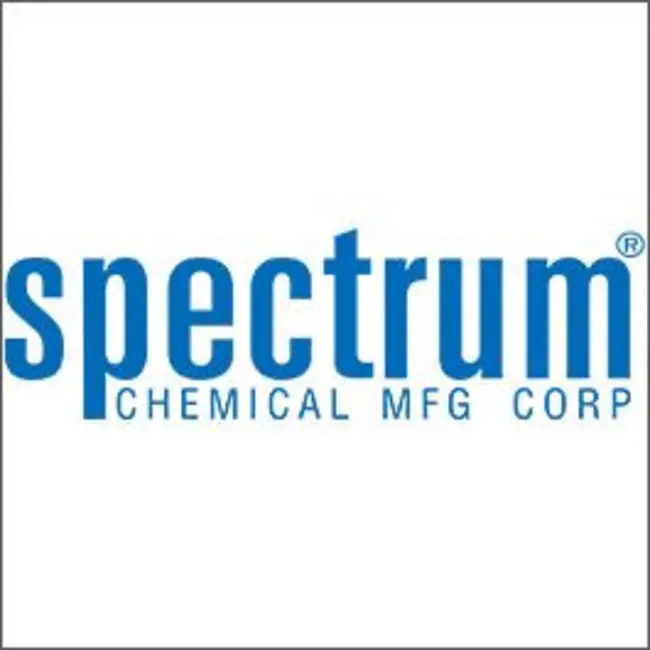GenScript Biotech
Showing 1351–1400 of 2554 results
-
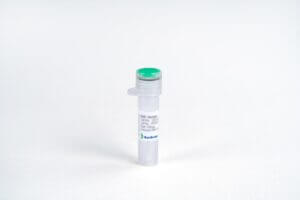
IL-18, Rat
$86.25 Add to cart View Product DetailsInterleukin-18 (IL18, also known as interferon-gamma inducing factor or IGIF) is a cytokine that belongs to the IL-1 superfamily and is produced by macrophages and other cells. Its biological activity is pleiotropic and it has been shown to induce interferon-gamma production in KG-1 cells. The combination of this cytokine and IL12 has been shown to inhibit IL4 dependent IgE and IgG1 production, and enhance IgG2a production in B cells.
-

IL-18, Rat
$306.19 Add to cart View Product DetailsInterleukin-18 (IL18, also known as interferon-gamma inducing factor or IGIF) is a cytokine that belongs to the IL-1 superfamily and is produced by macrophages and other cells. Its biological activity is pleiotropic and it has been shown to induce interferon-gamma production in KG-1 cells. The combination of this cytokine and IL12 has been shown to inhibit IL4 dependent IgE and IgG1 production, and enhance IgG2a production in B cells.
-
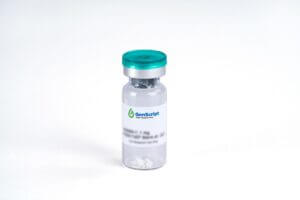
IL-19, Human
$3,639.75 Add to cart View Product DetailsInterleukin-19 (IL-19) is a cytokine belonging to the interleukin family. Structurally, IL-19 is grouped into the IL-10 sub-family, which also includes IL-20, IL-22, IL-24, and IL-26. In contrast to IL-10, which exists as a homodimer, IL-19 is stable and active as a monomer in vivo. IL-19 functions through the receptor complex composed of IL-20 Receptor α and IL-20 Receptor β, which is also utilized by IL-20 and IL-24. IL-19 is produced by active monocytes and stimulated synergistically by IL-17 and IL-13. The functions of IL-19 are to promote the development and function of Th2 cells and to enhance the production of Th2 cytokines. IL-19 is implicated in aging, vascular disease, Type I diabetes, and rheumatoid arthritis.
-

IL-19, Human
$167.33 Add to cart View Product DetailsInterleukin-19 (IL-19) is a cytokine belonging to the interleukin family. Structurally, IL-19 is grouped into the IL-10 sub-family, which also includes IL-20, IL-22, IL-24, and IL-26. In contrast to IL-10, which exists as a homodimer, IL-19 is stable and active as a monomer in vivo. IL-19 functions through the receptor complex composed of IL-20 Receptor α and IL-20 Receptor β, which is also utilized by IL-20 and IL-24. IL-19 is produced by active monocytes and stimulated synergistically by IL-17 and IL-13. The functions of IL-19 are to promote the development and function of Th2 cells and to enhance the production of Th2 cytokines. IL-19 is implicated in aging, vascular disease, Type I diabetes, and rheumatoid arthritis.
-

IL-19, Mouse
$2,018.25 Add to cart View Product DetailsInterleukin-19 (IL-19) is a cytokine belonging to the interleukin family. Structurally, IL-19 is grouped into the IL-10 sub-family, which also includes IL-20, IL-22, IL-24, and IL-26. In contrast to IL-10, which exists as a homodimer, IL-19 is stable and active as a monomer in vivo. IL-19 functions through the receptor complex composed of IL-20 Receptor α and IL-20 Receptor β, which is also utilized by IL-20 and IL-24. IL-19 is produced by active monocytes and stimulated synergistically by IL-17 and IL-13. The functions of IL-19 are to promote the development and function of Th2 cells and to enhance the production of Th2 cytokines. IL-19 is implicated in aging, vascular disease, Type I diabetes, and rheumatoid arthritis.
-

IL-19, Mouse
$86.25 Add to cart View Product DetailsInterleukin-19 (IL-19) is a cytokine belonging to the interleukin family. Structurally, IL-19 is grouped into the IL-10 sub-family, which also includes IL-20, IL-22, IL-24, and IL-26. In contrast to IL-10, which exists as a homodimer, IL-19 is stable and active as a monomer in vivo. IL-19 functions through the receptor complex composed of IL-20 Receptor α and IL-20 Receptor β, which is also utilized by IL-20 and IL-24. IL-19 is produced by active monocytes and stimulated synergistically by IL-17 and IL-13. The functions of IL-19 are to promote the development and function of Th2 cells and to enhance the production of Th2 cytokines. IL-19 is implicated in aging, vascular disease, Type I diabetes, and rheumatoid arthritis.
-

IL-19, Mouse
$340.69 Add to cart View Product DetailsInterleukin-19 (IL-19) is a cytokine belonging to the interleukin family. Structurally, IL-19 is grouped into the IL-10 sub-family, which also includes IL-20, IL-22, IL-24, and IL-26. In contrast to IL-10, which exists as a homodimer, IL-19 is stable and active as a monomer in vivo. IL-19 functions through the receptor complex composed of IL-20 Receptor α and IL-20 Receptor β, which is also utilized by IL-20 and IL-24. IL-19 is produced by active monocytes and stimulated synergistically by IL-17 and IL-13. The functions of IL-19 are to promote the development and function of Th2 cells and to enhance the production of Th2 cytokines. IL-19 is implicated in aging, vascular disease, Type I diabetes, and rheumatoid arthritis.
-
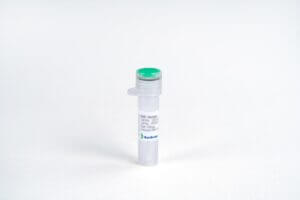
IL-1RA, Human
$1,073.81 Add to cart View Product DetailsInterleukin-1 receptor antagonist (IL-1ra) is a member of the IL-1 family. Endogenous IL-1ra is produced in numerous animal disease models as well as in human autoimmune and chronic inflammatory diseases. It binds to IL-1 receptors in competition with IL-1, but does not elicit intracellular response from this binding. Its role in counteracting the proinflammatory effects of IL-1 is being studied by numerous research groups. IL-4 and IL-13 have been shown to amplify the stimulatory effect of IL1-beta on the production of soluble and intracellular forms of IL1-ra. The regulated expression of IL1ra in various cell types has been shown to be influenced by cytokines. In synovial fibroblasts the synthesis of IL-1ra is markedly enhanced by IL-1, TNF-alpha, or PDGF.
-

IL-1RA, Human
$81.94 Add to cart View Product DetailsInterleukin-1 receptor antagonist (IL-1ra) is a member of the IL-1 family. Endogenous IL-1ra is produced in numerous animal disease models as well as in human autoimmune and chronic inflammatory diseases. It binds to IL-1 receptors in competition with IL-1, but does not elicit intracellular response from this binding. Its role in counteracting the proinflammatory effects of IL-1 is being studied by numerous research groups. IL-4 and IL-13 have been shown to amplify the stimulatory effect of IL1-beta on the production of soluble and intracellular forms of IL1-ra. The regulated expression of IL1ra in various cell types has been shown to be influenced by cytokines. In synovial fibroblasts the synthesis of IL-1ra is markedly enhanced by IL-1, TNF-alpha, or PDGF.
-

IL-1RA, Human
$254.44 Add to cart View Product DetailsInterleukin-1 receptor antagonist (IL-1ra) is a member of the IL-1 family. Endogenous IL-1ra is produced in numerous animal disease models as well as in human autoimmune and chronic inflammatory diseases. It binds to IL-1 receptors in competition with IL-1, but does not elicit intracellular response from this binding. Its role in counteracting the proinflammatory effects of IL-1 is being studied by numerous research groups. IL-4 and IL-13 have been shown to amplify the stimulatory effect of IL1-beta on the production of soluble and intracellular forms of IL1-ra. The regulated expression of IL1ra in various cell types has been shown to be influenced by cytokines. In synovial fibroblasts the synthesis of IL-1ra is markedly enhanced by IL-1, TNF-alpha, or PDGF.
-

IL-1α, Human
$3,458.63 Add to cart View Product DetailsIL-1 alpha is a non-secreted proinflammatory cytokine produced in a variety of cells including monocytes, tissue macrophages, keratinocytes and other epithelial cells. Both IL-1alpha and IL-1beta binds to the same receptor and has similar if not identical biological properties. These cytokines have a broad range of activities including, stimulation of thymocyte proliferation, by inducing IL-2 release, B-cell maturation and proliferation, mitogenic FGF-like activity and the ability to stimulate the release of prostaglandin and collagenase from synovial cells. However, whereas IL-1 beta is a secreted cytokine, IL-1 alpha is predominantly a cell-associated cytokine.
-

IL-1α, Human
$155.25 Add to cart View Product DetailsIL-1 alpha is a non-secreted proinflammatory cytokine produced in a variety of cells including monocytes, tissue macrophages, keratinocytes and other epithelial cells. Both IL-1alpha and IL-1beta binds to the same receptor and has similar if not identical biological properties. These cytokines have a broad range of activities including, stimulation of thymocyte proliferation, by inducing IL-2 release, B-cell maturation and proliferation, mitogenic FGF-like activity and the ability to stimulate the release of prostaglandin and collagenase from synovial cells. However, whereas IL-1 beta is a secreted cytokine, IL-1 alpha is predominantly a cell-associated cytokine.
-

IL-1α, Mouse
$3,458.63 Add to cart View Product DetailsInterleukin-1 alpha (IL-1α) is a non-secreted proinflammatory cytokine produced in a variety of cells including monocytes, tissue macrophages, keratinocytes and other epithelial cells. Both IL-1αand IL-1β binds to the same receptor and has similar if not identical biological properties. These cytokines have a broad range of activities including, stimulation of thymocyte proliferation, by inducing IL-2 release, B-cell maturation and proliferation, mitogenic FGF-like activity and the ability to stimulate the release of prostaglandin and collagenase from synovial cells. However, whereas IL-1β is a secreted cytokine, IL-1α is predominantly a cell-associated cytokine.
-

IL-1α, Mouse
$155.25 Add to cart View Product DetailsInterleukin-1 alpha (IL-1α) is a non-secreted proinflammatory cytokine produced in a variety of cells including monocytes, tissue macrophages, keratinocytes and other epithelial cells. Both IL-1αand IL-1β binds to the same receptor and has similar if not identical biological properties. These cytokines have a broad range of activities including, stimulation of thymocyte proliferation, by inducing IL-2 release, B-cell maturation and proliferation, mitogenic FGF-like activity and the ability to stimulate the release of prostaglandin and collagenase from synovial cells. However, whereas IL-1β is a secreted cytokine, IL-1α is predominantly a cell-associated cytokine.
-

IL-1α, Rat
$2,018.25 Add to cart View Product DetailsInterleukin-1 alpha (IL-1α), is produced in a variety of cells including monocytes, tissue macrophages, keratinocytes and other epithelial cells. Both IL-1 alpha and IL-1beta bind to the same receptor and have similar if not identical biological properties. These cytokines have a broad range of activities including stimulation of thymocyte proliferation via IL-2 release, B-cell maturation and proliferation, mitogenic FGF-like activity, and the ability to stimulate the release of prostaglandin and collagenase from synovial cells. However, whereas IL-1beta is a secreted cytokine, IL-1 alpha is predominantly a cell-associated cytokine.
-

IL-1α, Rat
$86.25 Add to cart View Product DetailsInterleukin-1 alpha (IL-1α), is produced in a variety of cells including monocytes, tissue macrophages, keratinocytes and other epithelial cells. Both IL-1 alpha and IL-1beta bind to the same receptor and have similar if not identical biological properties. These cytokines have a broad range of activities including stimulation of thymocyte proliferation via IL-2 release, B-cell maturation and proliferation, mitogenic FGF-like activity, and the ability to stimulate the release of prostaglandin and collagenase from synovial cells. However, whereas IL-1beta is a secreted cytokine, IL-1 alpha is predominantly a cell-associated cytokine.
-

IL-1α, Rat
$271.69 Add to cart View Product DetailsInterleukin-1 alpha (IL-1α), is produced in a variety of cells including monocytes, tissue macrophages, keratinocytes and other epithelial cells. Both IL-1 alpha and IL-1beta bind to the same receptor and have similar if not identical biological properties. These cytokines have a broad range of activities including stimulation of thymocyte proliferation via IL-2 release, B-cell maturation and proliferation, mitogenic FGF-like activity, and the ability to stimulate the release of prostaglandin and collagenase from synovial cells. However, whereas IL-1beta is a secreted cytokine, IL-1 alpha is predominantly a cell-associated cytokine.
-
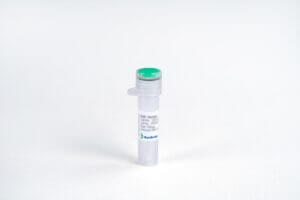
IL-1β, Human
$1,712.06 Add to cart View Product DetailsInterleukin-1 beta (rhIL-1β) is a proinflammatory cytokine produced in a variety of cells including monocytes, tissue macrophages, keratinocytes and other epithelial cells. Both IL-1 alpha and IL-1 beta binds to the same receptor and has similar if not identical biological properties. These cytokines have a broad range of activities including, stimulation of thymocyte proliferation, by inducing IL-2 release, B-cell maturation and proliferation, mitogenic FGF-like activity and the ability to stimulate the release of prostaglandin and collagenase from synovial cells. However, whereas IL-1 beta is a secreted cytokine, IL-1 alpha is predominantly a cell-associated cytokine.
-

IL-1β, Human
$94.88 Add to cart View Product DetailsInterleukin-1 beta (rhIL-1β) is a proinflammatory cytokine produced in a variety of cells including monocytes, tissue macrophages, keratinocytes and other epithelial cells. Both IL-1 alpha and IL-1 beta binds to the same receptor and has similar if not identical biological properties. These cytokines have a broad range of activities including, stimulation of thymocyte proliferation, by inducing IL-2 release, B-cell maturation and proliferation, mitogenic FGF-like activity and the ability to stimulate the release of prostaglandin and collagenase from synovial cells. However, whereas IL-1 beta is a secreted cytokine, IL-1 alpha is predominantly a cell-associated cytokine.
-

IL-1β, Human
$340.69 Add to cart View Product DetailsInterleukin-1 beta (rhIL-1β) is a proinflammatory cytokine produced in a variety of cells including monocytes, tissue macrophages, keratinocytes and other epithelial cells. Both IL-1 alpha and IL-1 beta binds to the same receptor and has similar if not identical biological properties. These cytokines have a broad range of activities including, stimulation of thymocyte proliferation, by inducing IL-2 release, B-cell maturation and proliferation, mitogenic FGF-like activity and the ability to stimulate the release of prostaglandin and collagenase from synovial cells. However, whereas IL-1 beta is a secreted cytokine, IL-1 alpha is predominantly a cell-associated cytokine.
-

IL-1β, Human(CHO-expressed)
$1,712.06 Add to cart View Product DetailsInterleukin 1 beta is a proinflammatory cytokine produced in a variety of cells including monocytes, tissue macrophages, keratinocytes and other epithelial cells. Both IL-1 alpha and IL-1 beta binds to the same receptor and has similar if not identical biological properties. These cytokines have a broad range of activities including, stimulation of thymocyte proliferation, by inducing IL-2 release, B-cell maturation and proliferation, mitogenic FGF-like activity and the ability to stimulate the release of prostaglandin and collagenase from synovial cells. However, whereas IL-1 beta is a secreted cytokine, IL-1 alpha is predominantly a cell-associated cytokine.
-

IL-1β, Human(CHO-expressed)
$94.88 Add to cart View Product DetailsInterleukin 1 beta is a proinflammatory cytokine produced in a variety of cells including monocytes, tissue macrophages, keratinocytes and other epithelial cells. Both IL-1 alpha and IL-1 beta binds to the same receptor and has similar if not identical biological properties. These cytokines have a broad range of activities including, stimulation of thymocyte proliferation, by inducing IL-2 release, B-cell maturation and proliferation, mitogenic FGF-like activity and the ability to stimulate the release of prostaglandin and collagenase from synovial cells. However, whereas IL-1 beta is a secreted cytokine, IL-1 alpha is predominantly a cell-associated cytokine.
-

IL-1β, Human(CHO-expressed)
$194.06 Add to cart View Product DetailsInterleukin 1 beta is a proinflammatory cytokine produced in a variety of cells including monocytes, tissue macrophages, keratinocytes and other epithelial cells. Both IL-1 alpha and IL-1 beta binds to the same receptor and has similar if not identical biological properties. These cytokines have a broad range of activities including, stimulation of thymocyte proliferation, by inducing IL-2 release, B-cell maturation and proliferation, mitogenic FGF-like activity and the ability to stimulate the release of prostaglandin and collagenase from synovial cells. However, whereas IL-1 beta is a secreted cytokine, IL-1 alpha is predominantly a cell-associated cytokine.
-

IL-1β, Mouse
$1,712.06 Add to cart View Product DetailsInterleukin-1 Beta (IL-1β) is a proinflammatory cytokine produced in a variety of cells including monocytes, tissue macrophages, keratinocytes and other epithelial cells. Both IL-1 alpha and IL-1 beta binds to the same receptor and has similar if not identical biological properties. These cytokines have a broad range of activities including, stimulation of thymocyte proliferation, by inducing IL-2 release, B-cell maturation and proliferation, mitogenic FGF-like activity and the ability to stimulate the release of prostaglandin and collagenase from synovial cells. However, whereas IL-1 beta is a secreted cytokine, IL-1 alpha is predominantly a cell-associated cytokine.
-

IL-1β, Mouse
$94.88 Add to cart View Product DetailsInterleukin-1 Beta (IL-1β) is a proinflammatory cytokine produced in a variety of cells including monocytes, tissue macrophages, keratinocytes and other epithelial cells. Both IL-1 alpha and IL-1 beta binds to the same receptor and has similar if not identical biological properties. These cytokines have a broad range of activities including, stimulation of thymocyte proliferation, by inducing IL-2 release, B-cell maturation and proliferation, mitogenic FGF-like activity and the ability to stimulate the release of prostaglandin and collagenase from synovial cells. However, whereas IL-1 beta is a secreted cytokine, IL-1 alpha is predominantly a cell-associated cytokine.
-

IL-1β, Mouse
$340.69 Add to cart View Product DetailsInterleukin-1 Beta (IL-1β) is a proinflammatory cytokine produced in a variety of cells including monocytes, tissue macrophages, keratinocytes and other epithelial cells. Both IL-1 alpha and IL-1 beta binds to the same receptor and has similar if not identical biological properties. These cytokines have a broad range of activities including, stimulation of thymocyte proliferation, by inducing IL-2 release, B-cell maturation and proliferation, mitogenic FGF-like activity and the ability to stimulate the release of prostaglandin and collagenase from synovial cells. However, whereas IL-1 beta is a secreted cytokine, IL-1 alpha is predominantly a cell-associated cytokine.
-

IL-1β, Mouse(CHO-expressed)
$1,651.69 Add to cart View Product DetailsInterleukin-1 (IL-1) is a family of cytokines that play a central role in the regulation of immune and inflammatory responses to infections or sterile insults. IL-1α and IL-1β are the first two members discovered in this family, which are the products of distinct genes recognizing the same cell surface receptors. IL-1α and IL-1β are structurally related polypeptides that show approximately 25% homology at the amino acid level. Both proteins are produced by a wide variety of cells in response to stimuli such as those produced by inflammatory agents, infections, or microbial endotoxins. The proteins are synthesized as 31 kDa precursors that are subsequently cleaved into proteins with molecular weights of approximately 17.5 kDa. The specific protease responsible for the processing of IL-1β is interleukin 1β-converting enzyme (ICE)/caspase-1. Mature human and mouse IL-1β share approximately 75% amino acid sequence identity where human IL-1β has been found to be active on murine cell lines.
-

IL-1β, Mouse(CHO-expressed)
$76.76 Add to cart View Product DetailsInterleukin-1 (IL-1) is a family of cytokines that play a central role in the regulation of immune and inflammatory responses to infections or sterile insults. IL-1α and IL-1β are the first two members discovered in this family, which are the products of distinct genes recognizing the same cell surface receptors. IL-1α and IL-1β are structurally related polypeptides that show approximately 25% homology at the amino acid level. Both proteins are produced by a wide variety of cells in response to stimuli such as those produced by inflammatory agents, infections, or microbial endotoxins. The proteins are synthesized as 31 kDa precursors that are subsequently cleaved into proteins with molecular weights of approximately 17.5 kDa. The specific protease responsible for the processing of IL-1β is interleukin 1β-converting enzyme (ICE)/caspase-1. Mature human and mouse IL-1β share approximately 75% amino acid sequence identity where human IL-1β has been found to be active on murine cell lines.
-

IL-1β, Mouse(CHO-expressed)
$245.81 Add to cart View Product DetailsInterleukin-1 (IL-1) is a family of cytokines that play a central role in the regulation of immune and inflammatory responses to infections or sterile insults. IL-1α and IL-1β are the first two members discovered in this family, which are the products of distinct genes recognizing the same cell surface receptors. IL-1α and IL-1β are structurally related polypeptides that show approximately 25% homology at the amino acid level. Both proteins are produced by a wide variety of cells in response to stimuli such as those produced by inflammatory agents, infections, or microbial endotoxins. The proteins are synthesized as 31 kDa precursors that are subsequently cleaved into proteins with molecular weights of approximately 17.5 kDa. The specific protease responsible for the processing of IL-1β is interleukin 1β-converting enzyme (ICE)/caspase-1. Mature human and mouse IL-1β share approximately 75% amino acid sequence identity where human IL-1β has been found to be active on murine cell lines.
-

IL-1β, Rat
$2,018.25 Add to cart View Product DetailsInterleukin-1 Beta (IL-1 Beta) is a proinflammatory cytokine produced in a variety of cells including monocytes, tissue macrophages, keratinocytes and other epithelial cells. Both IL-1 alpha and IL-1 beta bind to the same receptor and have similar if not identical biological properties. These cytokines have a broad range of activities including, stimulation of thymocyte proliferation, by inducing IL-2 release, B-cell maturation and proliferation, mitogenic FGF-like activity and the ability to stimulate the release of prostaglandin and collagenase from synovial cells. However, whereas IL-1 beta is a secreted cytokine, IL-1 alpha is predominantly a cell-associated cytokine.
-

IL-1β, Rat
$86.25 Add to cart View Product DetailsInterleukin-1 Beta (IL-1 Beta) is a proinflammatory cytokine produced in a variety of cells including monocytes, tissue macrophages, keratinocytes and other epithelial cells. Both IL-1 alpha and IL-1 beta bind to the same receptor and have similar if not identical biological properties. These cytokines have a broad range of activities including, stimulation of thymocyte proliferation, by inducing IL-2 release, B-cell maturation and proliferation, mitogenic FGF-like activity and the ability to stimulate the release of prostaglandin and collagenase from synovial cells. However, whereas IL-1 beta is a secreted cytokine, IL-1 alpha is predominantly a cell-associated cytokine.
-

IL-1β, Rat
$271.69 Add to cart View Product DetailsInterleukin-1 Beta (IL-1 Beta) is a proinflammatory cytokine produced in a variety of cells including monocytes, tissue macrophages, keratinocytes and other epithelial cells. Both IL-1 alpha and IL-1 beta bind to the same receptor and have similar if not identical biological properties. These cytokines have a broad range of activities including, stimulation of thymocyte proliferation, by inducing IL-2 release, B-cell maturation and proliferation, mitogenic FGF-like activity and the ability to stimulate the release of prostaglandin and collagenase from synovial cells. However, whereas IL-1 beta is a secreted cytokine, IL-1 alpha is predominantly a cell-associated cytokine.
-

IL-1β, Rat
$3,540.56 Add to cart View Product DetailsInterleukin-1beta (IL-1β) is a non-secreted proinflammatory cytokine produced mainly by activated macrophages, as well as neutrophils, epithelial cells, and endothelial cells. It possesses metabolic, physiological, haematopoietic activities, and plays one of the central roles in the regulation of the immune responses. Both IL-1αand IL-1β binds to the same receptor and have similar but not identical biological properties. The mature rat IL1β shares 90 % a.a. sequence identity with cotton rat and mouse and 65 % to 77 % with canine, human,and rhesus IL1β.
-

IL-1β, Rat
$159.56 Add to cart View Product DetailsInterleukin-1beta (IL-1β) is a non-secreted proinflammatory cytokine produced mainly by activated macrophages, as well as neutrophils, epithelial cells, and endothelial cells. It possesses metabolic, physiological, haematopoietic activities, and plays one of the central roles in the regulation of the immune responses. Both IL-1αand IL-1β binds to the same receptor and have similar but not identical biological properties. The mature rat IL1β shares 90 % a.a. sequence identity with cotton rat and mouse and 65 % to 77 % with canine, human,and rhesus IL1β.
-

IL-1β, Rat
$521.81 Add to cart View Product DetailsInterleukin-1beta (IL-1β) is a non-secreted proinflammatory cytokine produced mainly by activated macrophages, as well as neutrophils, epithelial cells, and endothelial cells. It possesses metabolic, physiological, haematopoietic activities, and plays one of the central roles in the regulation of the immune responses. Both IL-1αand IL-1β binds to the same receptor and have similar but not identical biological properties. The mature rat IL1β shares 90 % a.a. sequence identity with cotton rat and mouse and 65 % to 77 % with canine, human,and rhesus IL1β.
-

IL-2 R α, His, Human
$1,224.75 Add to cart View Product DetailsInterleukin-2 receptor (IL-2R) is a heterotrimeric protein expressed on the surface of certain immune cells, such as lymphocytes, that binds and responds to the cytokine IL-2. The IL-2R is made up of 3 subunits – alpha (α), beta (β) and gamma (γ). The α and β chains are involved in binding IL-2, while signal transduction following cytokine interaction is carried out by the γ-chain, along with the β subunit. The β and γ chains of the IL-2R are members of the type I cytokine receptor family. IL-2R has a high binding affinity to IL-2 and is expressed by antigen-activated T lymphocytes (T cells). IL-2 Rα is also known as CD25, p55, and Tac (activated T cell) antigen.
-

IL-2 R α, His, Human
$63.83 Add to cart View Product DetailsInterleukin-2 receptor (IL-2R) is a heterotrimeric protein expressed on the surface of certain immune cells, such as lymphocytes, that binds and responds to the cytokine IL-2. The IL-2R is made up of 3 subunits – alpha (α), beta (β) and gamma (γ). The α and β chains are involved in binding IL-2, while signal transduction following cytokine interaction is carried out by the γ-chain, along with the β subunit. The β and γ chains of the IL-2R are members of the type I cytokine receptor family. IL-2R has a high binding affinity to IL-2 and is expressed by antigen-activated T lymphocytes (T cells). IL-2 Rα is also known as CD25, p55, and Tac (activated T cell) antigen.
-

IL-2 R α, His, Human
$146.63 Add to cart View Product DetailsInterleukin-2 receptor (IL-2R) is a heterotrimeric protein expressed on the surface of certain immune cells, such as lymphocytes, that binds and responds to the cytokine IL-2. The IL-2R is made up of 3 subunits – alpha (α), beta (β) and gamma (γ). The α and β chains are involved in binding IL-2, while signal transduction following cytokine interaction is carried out by the γ-chain, along with the β subunit. The β and γ chains of the IL-2R are members of the type I cytokine receptor family. IL-2R has a high binding affinity to IL-2 and is expressed by antigen-activated T lymphocytes (T cells). IL-2 Rα is also known as CD25, p55, and Tac (activated T cell) antigen.
-

IL-2, Human
$978.94 Add to cart View Product DetailsInterleukin-2 (IL-2) is a Oglycosylated, four α-helix bundle cytokine that has potent stimulatory activity for antigen-activated T cells. It is expressed by CD4+ and CD8+ T cells, γδ T cells, B cells, dendritic cells, and eosinophils. IL-2/IL-2R signaling is required for T-cell proliferation and other fundamental functions which are essential for the immune response. IL-2 stimulates growth and differentiation of B-cells, NK cells, lymphokine activated killer cells, monocytes, macrophages and oligodendrocytes.
-

IL-2, Human
$68.14 Add to cart View Product DetailsInterleukin-2 (IL-2) is a Oglycosylated, four α-helix bundle cytokine that has potent stimulatory activity for antigen-activated T cells. It is expressed by CD4+ and CD8+ T cells, γδ T cells, B cells, dendritic cells, and eosinophils. IL-2/IL-2R signaling is required for T-cell proliferation and other fundamental functions which are essential for the immune response. IL-2 stimulates growth and differentiation of B-cells, NK cells, lymphokine activated killer cells, monocytes, macrophages and oligodendrocytes.
-

IL-2, Human
$86.25 Add to cart View Product DetailsInterleukin-2 (IL-2) is a Oglycosylated, four α-helix bundle cytokine that has potent stimulatory activity for antigen-activated T cells. It is expressed by CD4+ and CD8+ T cells, γδ T cells, B cells, dendritic cells, and eosinophils. IL-2/IL-2R signaling is required for T-cell proliferation and other fundamental functions which are essential for the immune response. IL-2 stimulates growth and differentiation of B-cells, NK cells, lymphokine activated killer cells, monocytes, macrophages and oligodendrocytes.
-
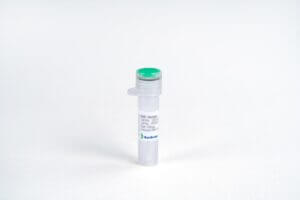
IL-2, Human
$599.44 Add to cart View Product DetailsInterleukin-2 (IL-2) is a Oglycosylated, four α-helix bundle cytokine that has potent stimulatory activity for antigen-activated T cells. It is expressed by CD4+ and CD8+ T cells, γδ T cells, B cells, dendritic cells, and eosinophils. IL-2/IL-2R signaling is required for T-cell proliferation and other fundamental functions which are essential for the immune response. IL-2 stimulates growth and differentiation of B-cells, NK cells, lymphokine activated killer cells, monocytes, macrophages and oligodendrocytes.
-

IL-2, Human
$64.69 Add to cart View Product DetailsInterleukin-2 (IL-2) is a Oglycosylated, four α-helix bundle cytokine that has potent stimulatory activity for antigen-activated T cells. It is expressed by CD4+ and CD8+ T cells, γδ T cells, B cells, dendritic cells, and eosinophils. IL-2/IL-2R signaling is required for T-cell proliferation and other fundamental functions which are essential for the immune response. IL-2 stimulates growth and differentiation of B-cells, NK cells, lymphokine activated killer cells, monocytes, macrophages and oligodendrocytes.
-

IL-2, Human
$150.94 Add to cart View Product DetailsInterleukin-2 (IL-2) is a Oglycosylated, four α-helix bundle cytokine that has potent stimulatory activity for antigen-activated T cells. It is expressed by CD4+ and CD8+ T cells, γδ T cells, B cells, dendritic cells, and eosinophils. IL-2/IL-2R signaling is required for T-cell proliferation and other fundamental functions which are essential for the immune response. IL-2 stimulates growth and differentiation of B-cells, NK cells, lymphokine activated killer cells, monocytes, macrophages and oligodendrocytes.
-

IL-2, Mouse
$1,871.63 Add to cart View Product DetailsMature mouse IL-2 shares 56% and 73% aa sequence identity with human and rat IL-2, respectively. It shows strain-specific heterogeneity in an N-terminal region that contains a poly-glutamine stretch. Mouse and human IL-2 exhibit cross-species activity. The receptor for IL-2 consists of three subunits that are present on the cell surface in varying preformed complexes. The 55 kDa IL-2 R alpha is specific for IL-2 and binds with low affinity. The 75 kDa IL-2 R beta, which is also a component of the IL-15 receptor, binds IL-2 with intermediate affinity. The 64 kDa common gamma chain gamma c/IL-2 R gamma, which is shared with the receptors for IL-4, -7, -9, -15, and -21, does not independently interact with IL-2. Upon ligand binding, signal transduction is performed by both IL-2 R beta and gamma c. It drives resting T cells to proliferate and induces IL-2 and IL-2 R alpha synthesis. It contributes to T cell homeostasis by promoting the Fas-induced death of naïve CD4+ T cells but not activated CD4+ memory lymphocytes. IL-2 plays a central role in the expansion and maintenance of regulatory T cells, although it inhibits the development of Th17 polarized cells.
-

IL-2, Mouse
$155.25 Add to cart View Product DetailsMature mouse IL-2 shares 56% and 73% aa sequence identity with human and rat IL-2, respectively. It shows strain-specific heterogeneity in an N-terminal region that contains a poly-glutamine stretch. Mouse and human IL-2 exhibit cross-species activity. The receptor for IL-2 consists of three subunits that are present on the cell surface in varying preformed complexes. The 55 kDa IL-2 R alpha is specific for IL-2 and binds with low affinity. The 75 kDa IL-2 R beta, which is also a component of the IL-15 receptor, binds IL-2 with intermediate affinity. The 64 kDa common gamma chain gamma c/IL-2 R gamma, which is shared with the receptors for IL-4, -7, -9, -15, and -21, does not independently interact with IL-2. Upon ligand binding, signal transduction is performed by both IL-2 R beta and gamma c. It drives resting T cells to proliferate and induces IL-2 and IL-2 R alpha synthesis. It contributes to T cell homeostasis by promoting the Fas-induced death of naïve CD4+ T cells but not activated CD4+ memory lymphocytes. IL-2 plays a central role in the expansion and maintenance of regulatory T cells, although it inhibits the development of Th17 polarized cells.
-

IL-20, Human
$3,458.63 Add to cart View Product DetailsIL-20 is a member of the IL-10 family of regulatory cytokines which includes IL-10, IL-19, IL-20, IL-22, IL-24 and IL-26. Members of this family share partial homology in their amino acid sequences but they are dissimilar in their biological functions. IL-20 is a hematopoietic growth factor capable of stimulating colony formation by CD34+ multipotential progenitors, but not by other progenitor cells. IL-20 signals through a receptor system composed of type I IL-20R-α and type II IL-20R-β. Over-expression of IL-20 in keratinocytes expressing both receptor subunits has been implicated in the induction of inflammatory skin disease.
-

IL-20, Human
$155.25 Add to cart View Product DetailsIL-20 is a member of the IL-10 family of regulatory cytokines which includes IL-10, IL-19, IL-20, IL-22, IL-24 and IL-26. Members of this family share partial homology in their amino acid sequences but they are dissimilar in their biological functions. IL-20 is a hematopoietic growth factor capable of stimulating colony formation by CD34+ multipotential progenitors, but not by other progenitor cells. IL-20 signals through a receptor system composed of type I IL-20R-α and type II IL-20R-β. Over-expression of IL-20 in keratinocytes expressing both receptor subunits has been implicated in the induction of inflammatory skin disease.
-

IL-21, Human
$146.63 Add to cart View Product DetailsIL-21 is a pleiotropic cytokine produced by CD4+ T cells in response to antigenic stimulation. Its action generally enhances antigen-specific responses of immune cells. The biological effects of IL-21 include induction of differentiation of T-cells-stimulated B-cells into plasma cells and memory B-cells, stimulation (in conjuction) with IL-4 of IgG production, and induction of apoptotic effects in naïve B-cells and stimulated B-cells in the absence of T-cell signaling. Additionally, IL-21 promotes the anti-tumor activity of CD8+ T-cells and NK cells. IL-21 exerts its effect through binding to a specific type I cytokine receptor, IL-21R, which also contains the gamma chain (γc) found in other cytokine receptors including IL-2, IL-4, IL-7, IL-9 and IL-15. The IL-21/IL-21R interaction triggers a cascade of events which includes activation of the tyrosine kinases JAK1 and JAK3, followed by activation of the transcription factors STAT1 and STAT3.
-

IL-21, Human
$2,018.25 Add to cart View Product DetailsInterleukin-21 (IL-21) belongs to the Type I four helix bundle cytokines, and shares the common cytokine receptor γ chain with IL-2, IL-4, IL-7, IL-9, and IL-15. IL-21 is expressed by CD4+ T cells, natural killer (NK) T cells, and Th17 cells, and the IL-21 receptor is highly expressed on CD4+ and CD8+ B cells; indeed, IL-21 plays a pivotal role in the survival and proliferation of B cells, and their differentiation to immunoglobulin (Ig) producing cells. IL-21 up-regulates and down-regulates the production of IgG1 and IgE by B cells, respectively, and diminishes the severity of allergy and asthma. In some case, IL-21 also induces the apoptosis of B cells. The other roles of IL-21 include regulation of innate immune systems, implication on autoimmunity, and antitumor actions.
